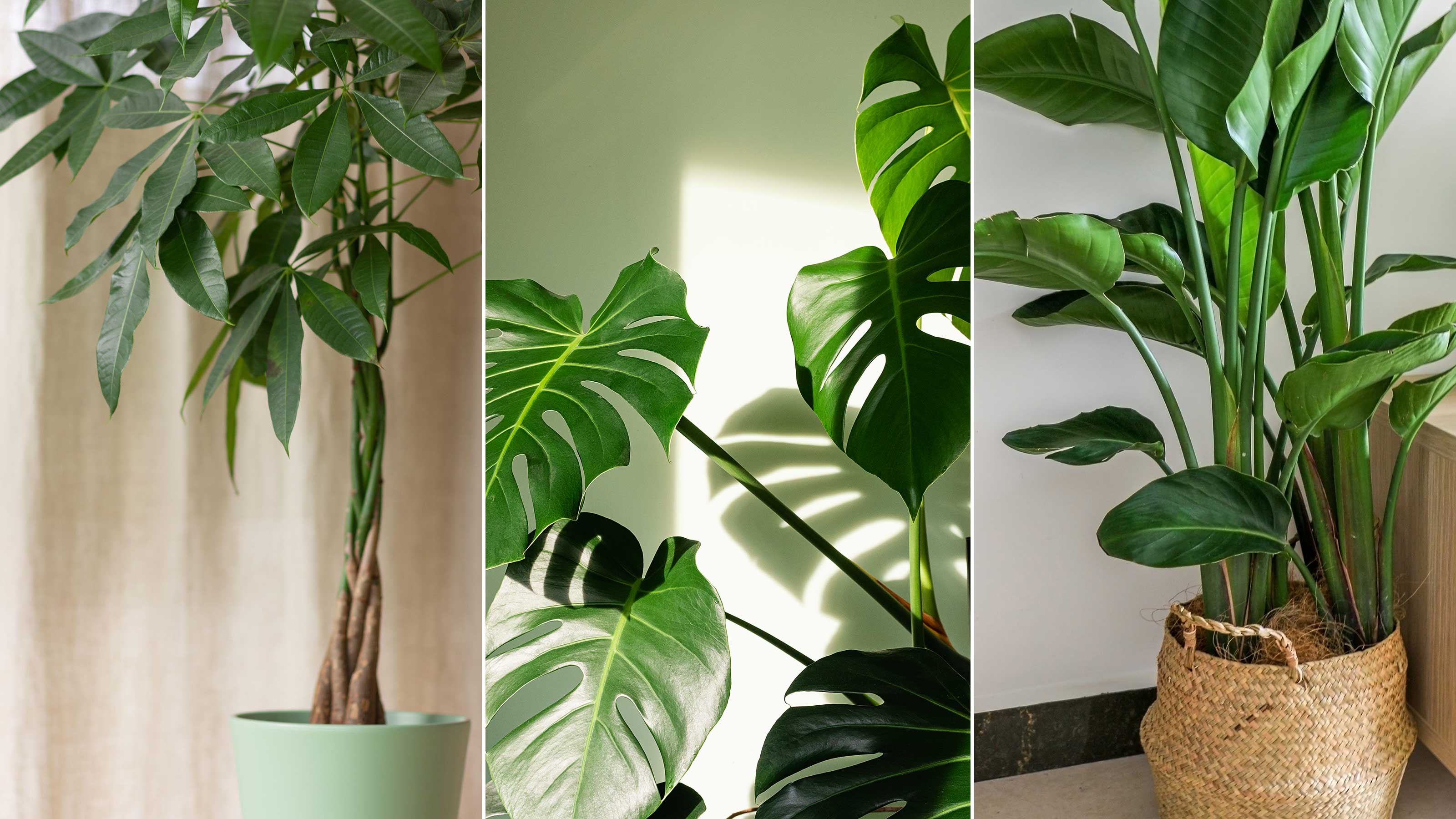
The best tall houseplants make an impact in your home and create a jungle-like vibe. And many of them are super easy to look after, even for beginner plant parents.
Below, our houseplant experts share their top picks. There's plenty of practical advice on plant styling and maintenance, too.
If you're looking to fill empty vertical space in your home with fabulous foliage, these beautiful indoor plants are definitely worth considering.
10 best tall houseplants for adding impact to your space
Paired with large pots for indoor plants, either on the floor or perhaps on a sturdy stand, these majestic options will create a statement in your interior scheme.
1. Fiddle Leaf Fig
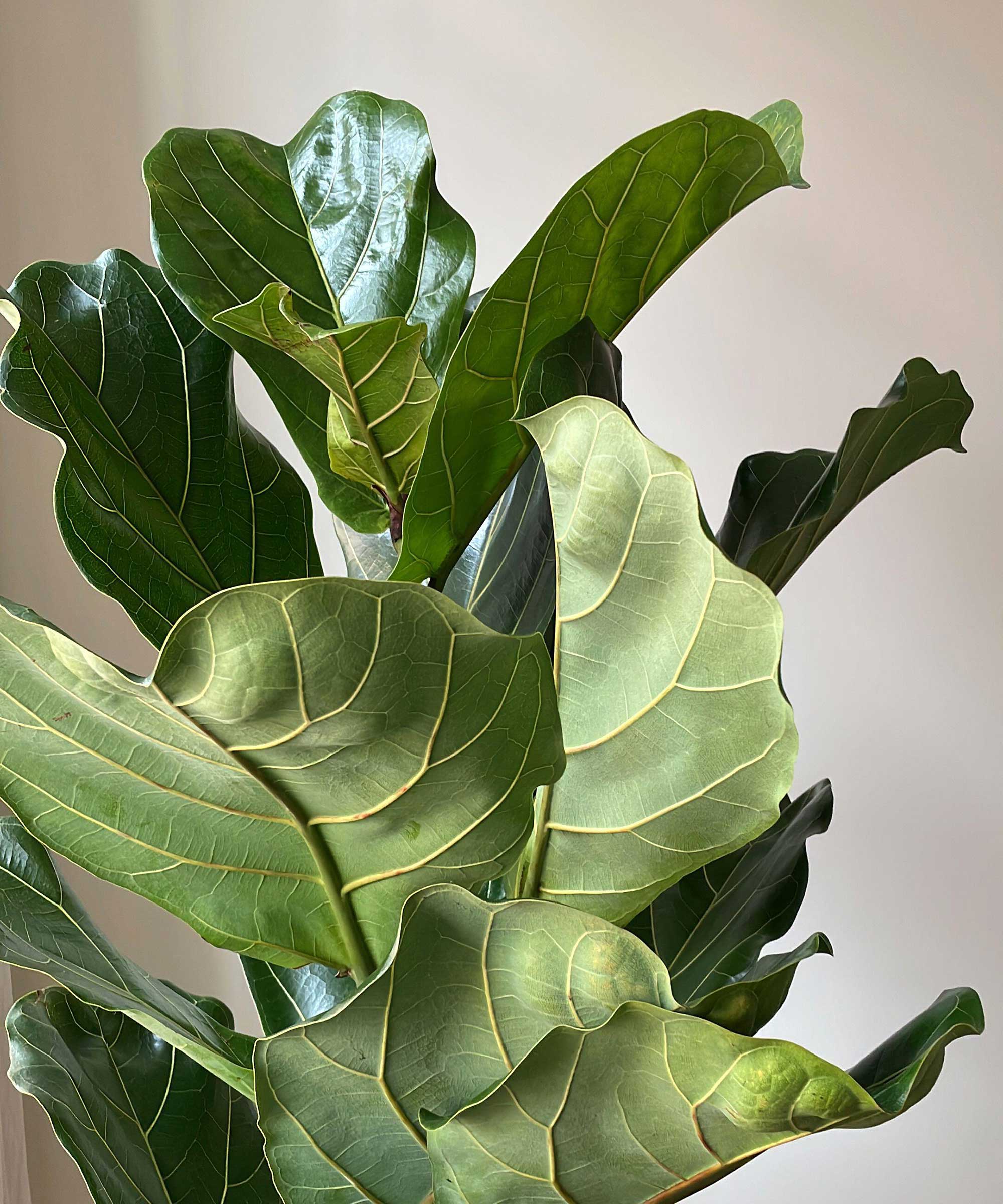
Juliette Vassilkioti, founder of My City Plants, says, "Fiddle leaf fig (Ficus lyrata) stands out with its bold, violin-shaped leaves, making it a popular choice across various decor settings."
Whether used as a centerpiece in a spacious room or placed in a corner, its striking appearance ensures it becomes a captivating focal point, she added.
Vladan Nikolic (Mr. Houseplant) also recommends these as some of the best tall houseplants. "As an indoor plant, it typically reaches six to 10 feet in height," he says.
In terms of caring for fiddle leaf figs, Juliette says bright, indirect light will help them thrive. They also prefer well-draining soil, she notes.
Vladan recommends watering a fiddle leaf fig when the soil has fully dried out. "If the plant is thirsty, its leaves will droop." You should repot your plant once a year to give it fresh soil with nutrients, he adds.
Note these aren't exactly easy houseplants to look after. However, if you're up for a challenge, you can shop for fiddle leaf figs from Lively Root. It's also possible to propagate a fiddle leaf fig from a stem cutting.
2. Parlor Palm
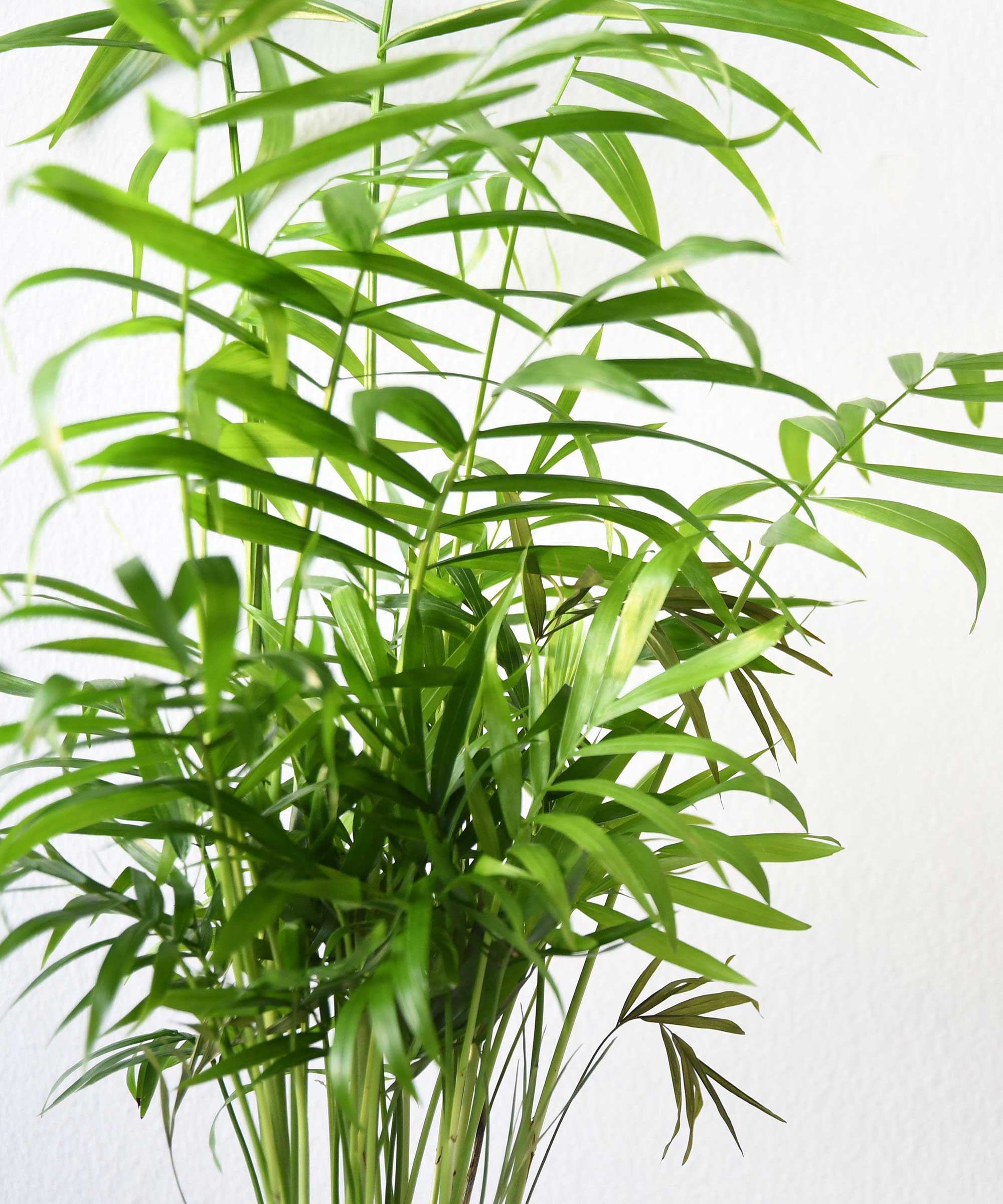
Houseplant expert Holly Mixon recommends parlor palms (Chamaedorea elegans), which, she says, are loved for their ease of care, resilience, and elegant appearance. They grow to around four to six feet indoors, she says. Plus, it's good news for four-legged friends, as these are pet-friendly houseplants.
"They grow best in moderate, indirect light with warm temperatures," she says. "Keep the soil moist but not waterlogged."
Like when caring for Chinese money plants, parlor palms like a bit of a boost in humidity levels. Spraying them regularly with a plant mister (we like this glass one from Amazon for its vintage look) can help get their environment just right.
You can shop for parlor palms from The Sill.
3. Bird of Paradise

Holly also recommends bird of paradise plants, otherwise known as Strelitzia reginae. "They have big, tropical, banana-like leaves, and generally grow around five to seven feet indoors," she says. "They prefer bright, indirect light, but can tolerate medium indirect light as well. Place them near a window but avoid direct sunlight as that can scorch the leaves."
They like their soil to be kept moist, but not soggy, she adds. "I fertilize mine twice monthly during the growing season."
For a larger alternative, consider the giant white bird of paradise (Strelitzia nicolai) – a recommendation from Juliette. She loves using it as a focal point in rooms with high ceilings to highlight its grandeur, or placing it by a seating area to add a relaxing ambiance.
Both types of bird of paradise plants are available from Lively Root and make striking low-maintenance houseplants for living rooms if you have the space.
4. Rubber Plant
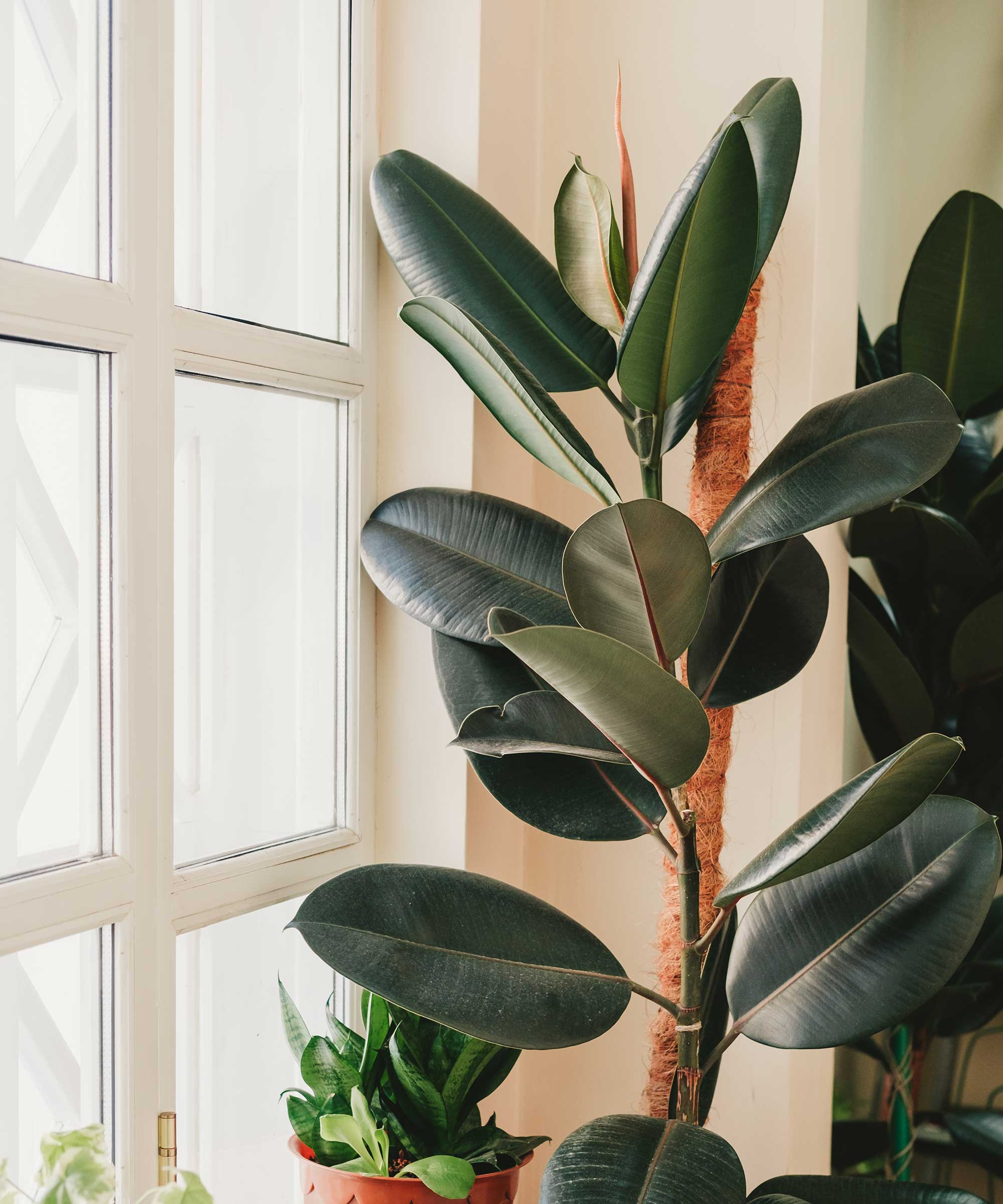
Also known as Ficus elastica, fiddle leaf figs are easily one of the best tall houseplants. Holly notes that they come in a variety of colors and can grow up to 10 feet tall indoors.
"While these plants love bright, indirect light, they can also tolerate a degree of shade," she says. "Water deeply, but allow the top two inches of soil to dry between waterings. Ficus grow quickly and benefit from repotting once every couple of years."
We particularly love the Ficus elastica "Tineke", available from Lively Root. With its vibrant leaves and easy-care nature, it's one of the best plants for an office.
5. Cacti
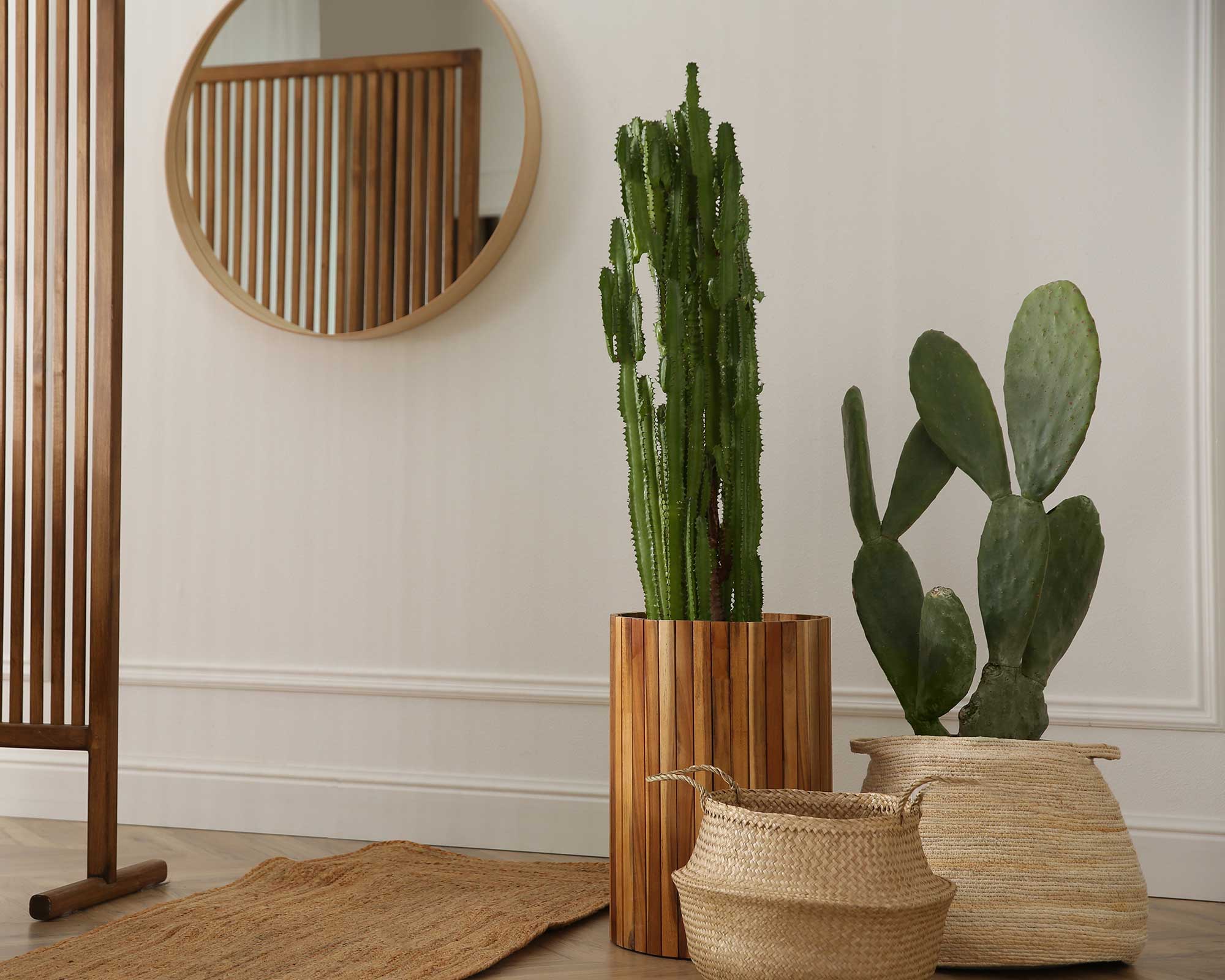
Juliette says that cacti come in a variety of shapes and sizes, making them versatile additions to any space. Her favorite is the "Blue Myrtle" cactus, she reveals, which she likes to showcase as a single large specimen in a decorative pot by a sunny window.
"They prefer bright light and well-draining soil," she says. "Known for their low-maintenance nature, cacti do not require frequent watering and should be watered sparingly, allowing the soil to dry out completely between waterings."
The Sill sells a dedicated cacti potting mix, which is suitable for growing succulents, too.
6. Yucca
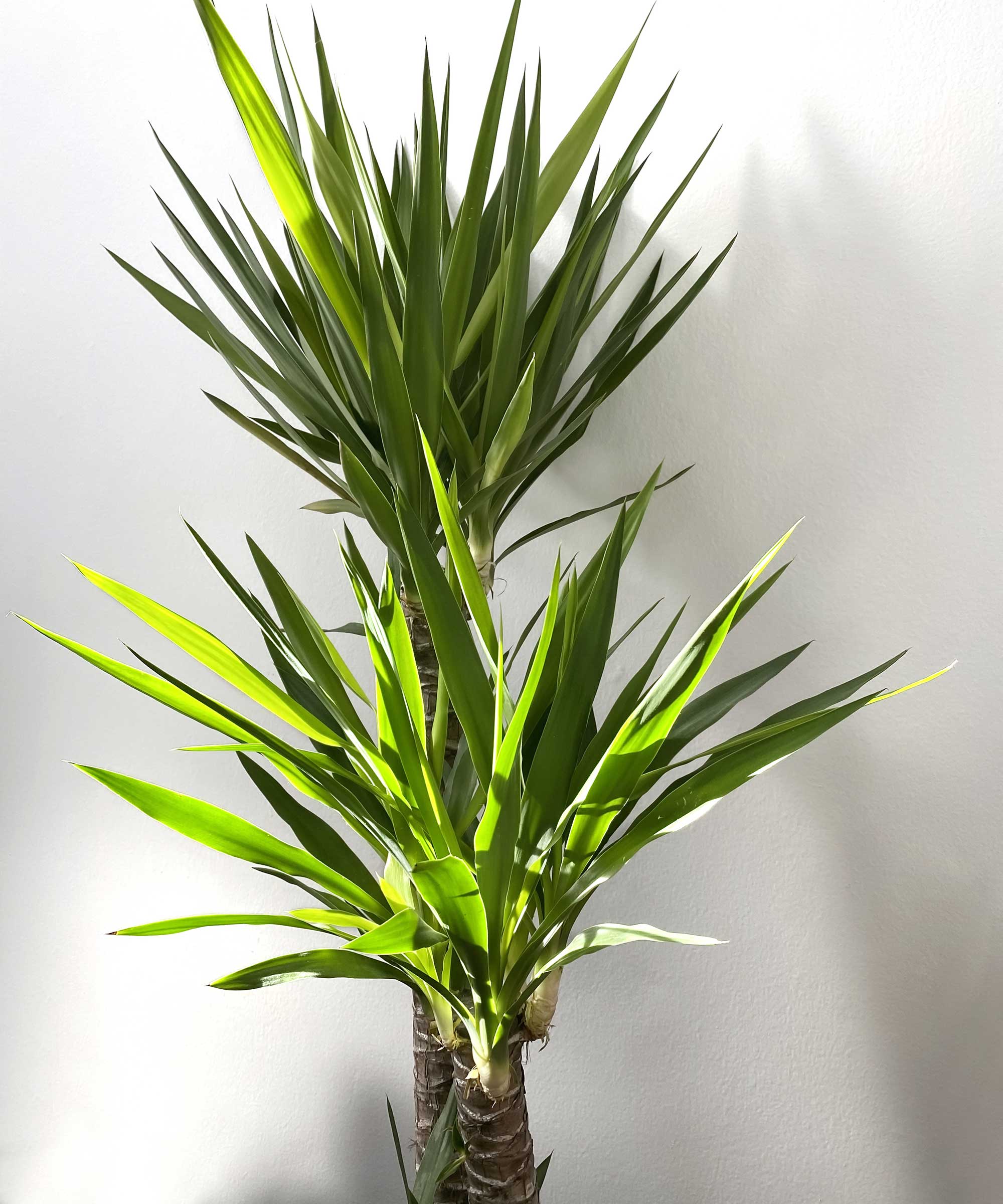
Diane Kuthy of How To Grow Everything says, "A well-potted indoor yucca plant can grow as tall as eight feet. They are desert plants so they prefer a warm and dry environment."
In fact, when watering your yucca plant, you should wait until the soil is almost fully dry before drenching the pot, Diane advises. "Watering too frequently can kill your yucca plant."
Diane also recommends planting your indoor yucca in a really well-draining potting soil mixture that does not hold onto water. A potting mix designed for cacti or succulents is suitable.
7. Money tree
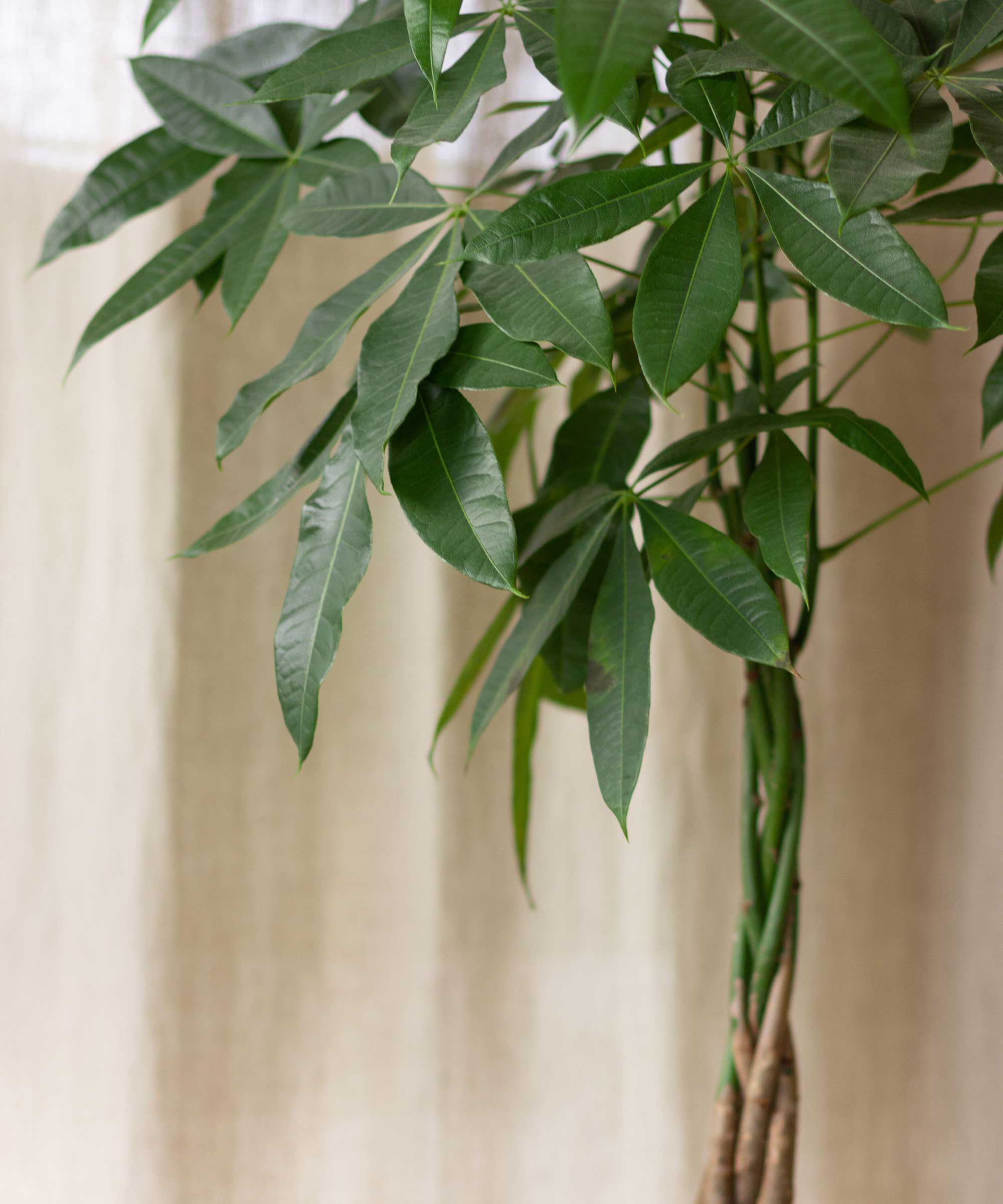
Money trees, available to shop from The Sill, have glossy green leaves and slender trunks that are often braided. Also known as Pachira aquatica, they can eventually grow to six to eight feet.
Plant expert Paris Lalicata from The Sill says, "The money tree is the perfect plant to add to any room of your home to create good Feng Shu." It's said to bring good luck and fortune, she adds.
Learning how to care for a money tree is simple, even for beginners. Just be careful not to water it too regularly – a common houseplant mistake to avoid. Paris says, "Water about every week, allowing the soil to mostly dry out between waterings." It thrives in bright indirect light but can tolerate a few hours of direct sunlight, she adds.
8. Dracaena Lisa
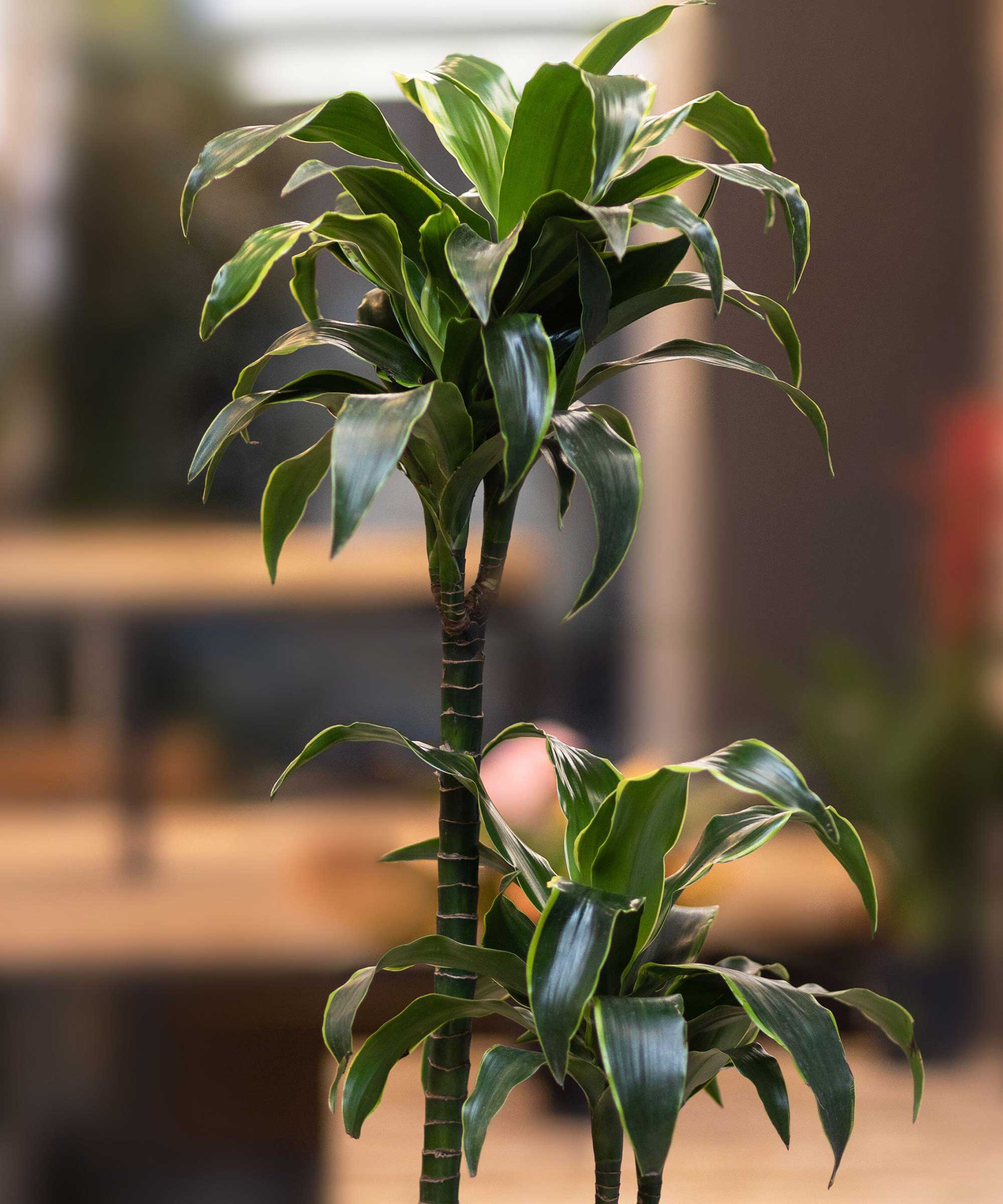
Another suggestion from Juliette, dracaena Lisa (Dracaena fragrans "Lisa") has sleek, dark green leaves that add a touch of elegance to any space. "I prefer to place it in a tall, cylindrical planter to accentuate its height," she says.
They thrive in bright, indirect light – similar to when caring for most houseplants. But, they can also tolerate lower light conditions, Juliette says. With their low watering needs, it's best to water when the soil is nearly dry throughout, she adds.
9. Monstera
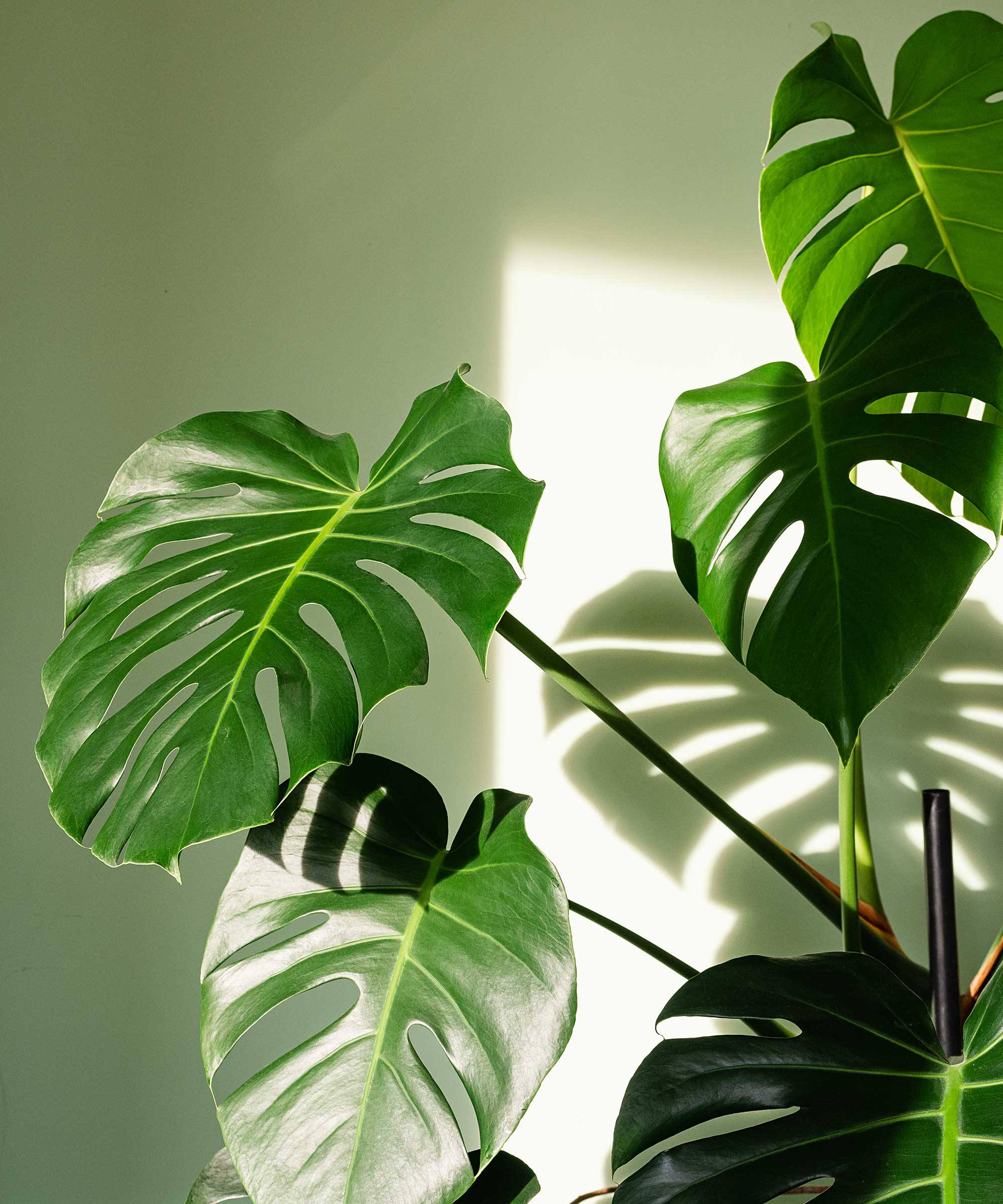
Nastya Vasylchyshyna, a resident botany expert at Plantum, highlights the distinctive appearance of the monstera, also called the Swiss cheese plant. "It will take your breath away with its magnificent large leaves with dramatic holes," she says.
Bright, indirect light is best, she advises, as direct sunlight can scorch the foliage. "For healthy growth, it’ll also require high humidity and timely watering," she adds, recommending giving your monstera a drink once the topsoil dries off.
These tropical indoor plants have a vining nature, and with the help of moss poles (available at Amazon), they can scramble upward to heights of around 10 feet indoors. Nastya says to keep the pole moist by regularly misting it.
Watch out for houseplant pests, such as thrips, which can be tackled with an insecticidal soap if needs be. The Garden Safe insecticidal soap spray, available from Amazon, is a popular choice.
10. Kentia palm
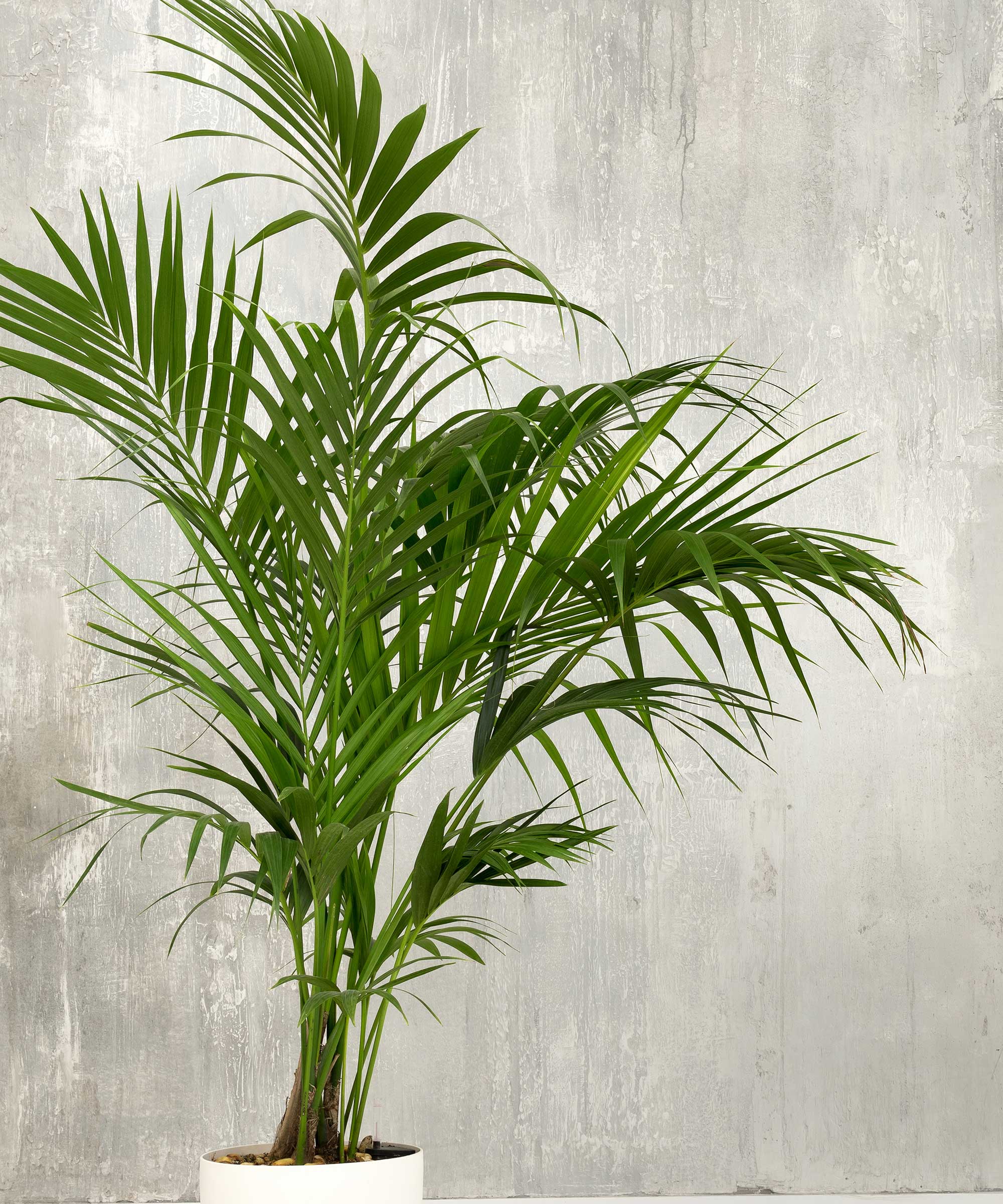
Said to be a top air-purifying plant, the slow-growing kentia palm is another good option for filling a corner with gorgeous green leaves.
Like the parlor palm, this tropical beauty is undemanding in terms of maintenance, doing best with bright but indirect light and well-draining soil. It grows slightly larger than the parlor palm, however, reaching around 10 feet at maturity indoors.
What to shop
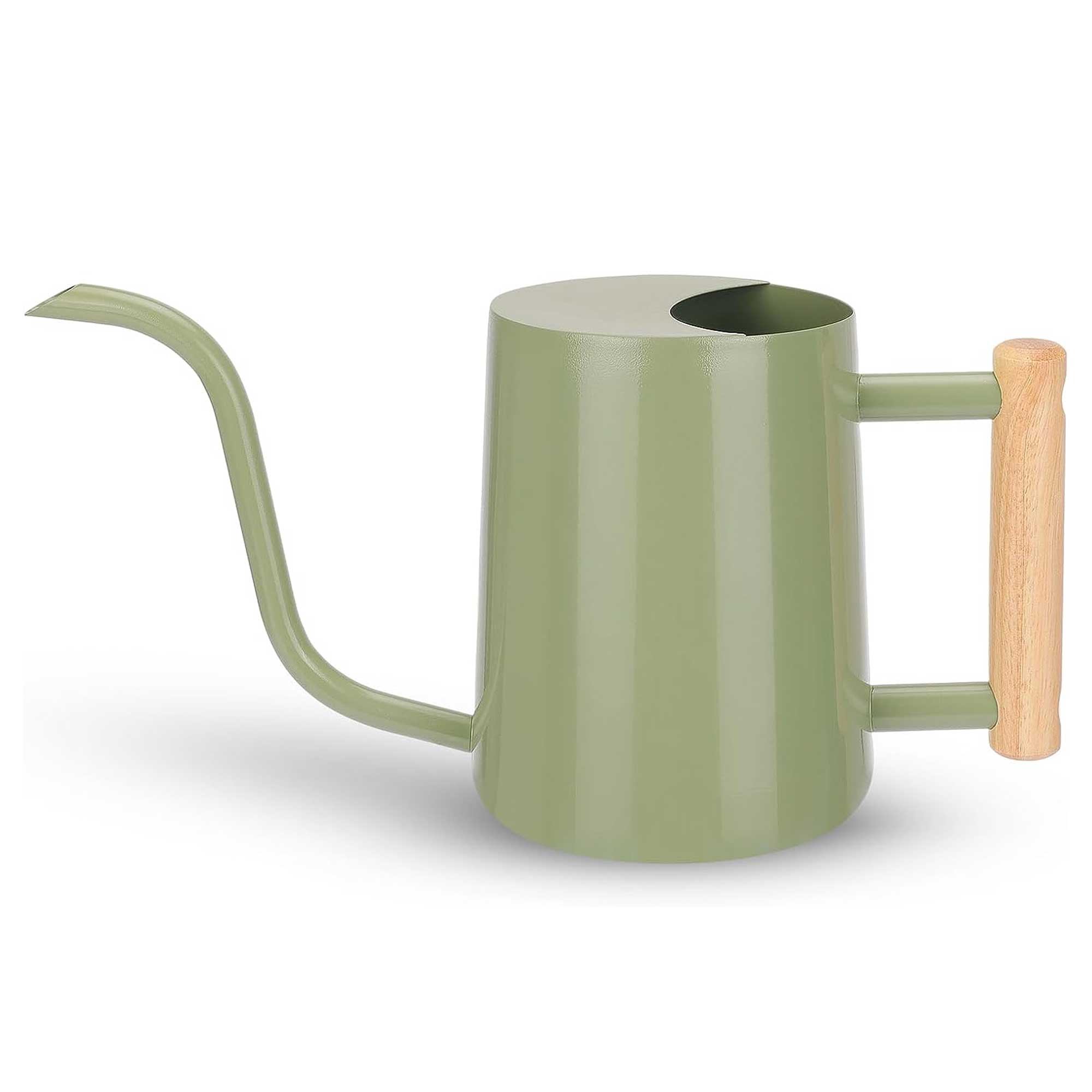
Price: $19.99
Keep your houseplants happy and healthy with this compact, powder-coated watering can. Its design is super stylish, too.
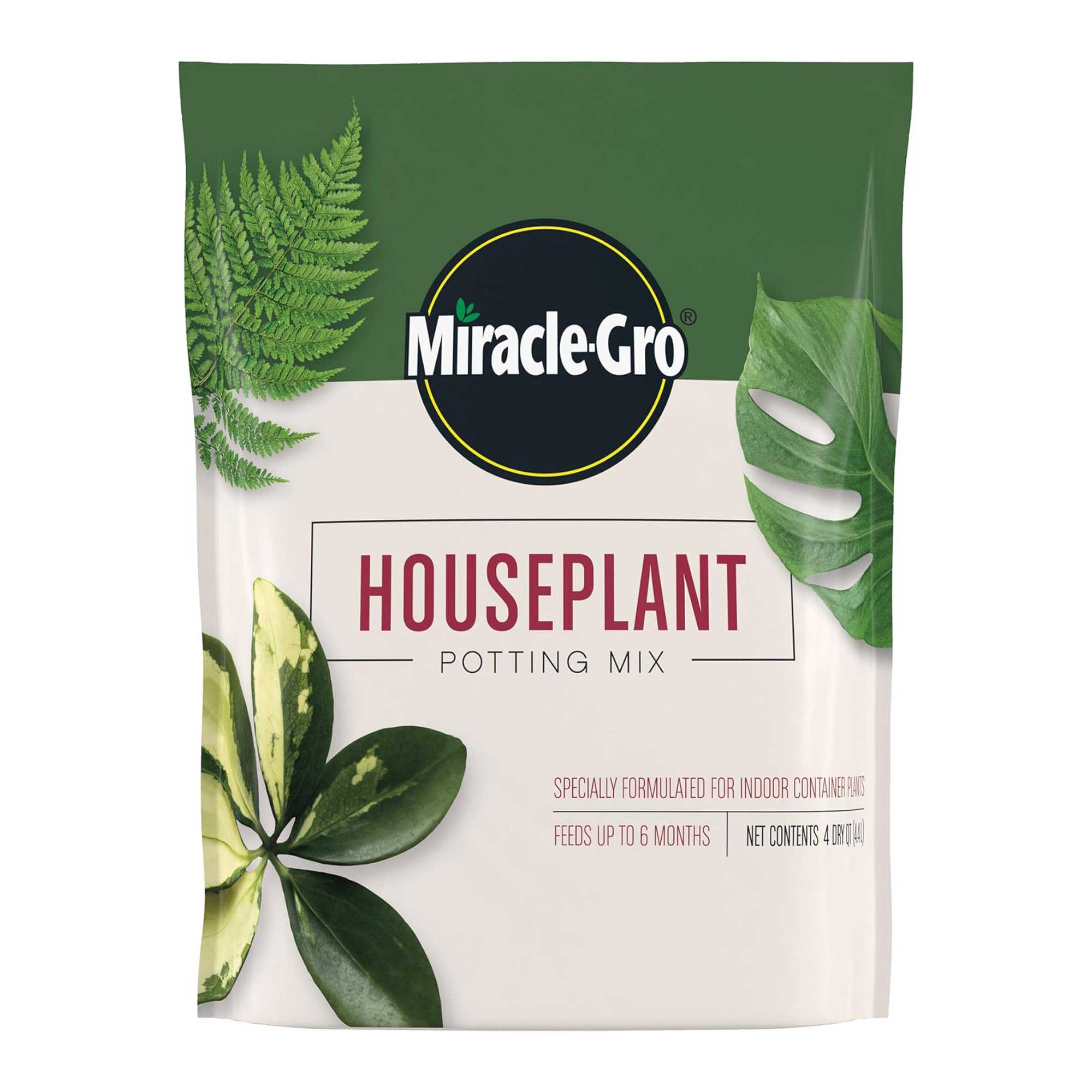
Price: $13.33
This well-rated potting mix feeds plants for up to six months to help them thrive. It's suitable for a wide range of indoor favorites.
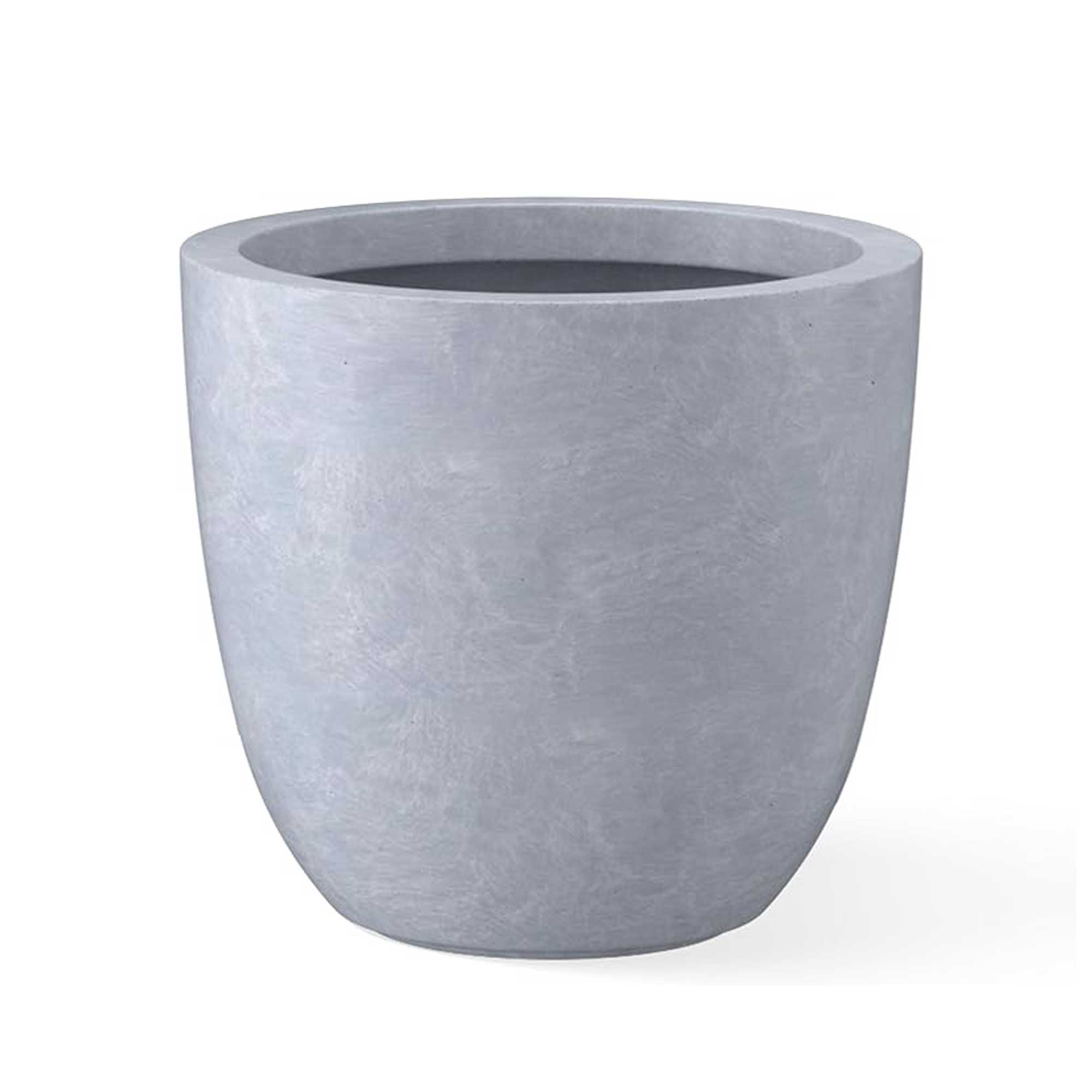
Price: $40.87
We love the contemporary look of this concrete and fiberglass planter from Kante. It comes in a range of hues, including charcoal and white.
FAQs
How should you style tall houseplants?
Juliette says, "Tall and large plants should be used intentionally to fill vertical spaces, create focal points, or highlight architectural features."
She also advises mixing various plant heights and textures to enhance visual interest. So, try surrounding your taller plants with some of the best houseplants for small spaces, as well as a few medium-sized picks.
"When styling your space with plants, it's essential to consider their mature height and spread to ensure they have enough room to thrive," she adds.
Choose planters that complement your decor style for a cohesive look in your chosen room.
Do any tall houseplants have flowers?
Most tall houseplants are prized for their impressive stature and luscious foliage rather than blooms.
Bird of paradise plants can produce impressive blooms. However, these won't appear unless the plant is given a lot of bright, direct sunlight daily, notes Diane. Some varieties of peace lilies can also grow quite tall with the right care, and have large, white blooms.
Looking for more ways to utilize vertical spaces for gorgeous greenery? Consider combining some of the best trailing houseplants with stylish hanging planters or cute plant pots positioned high up on shelves.







